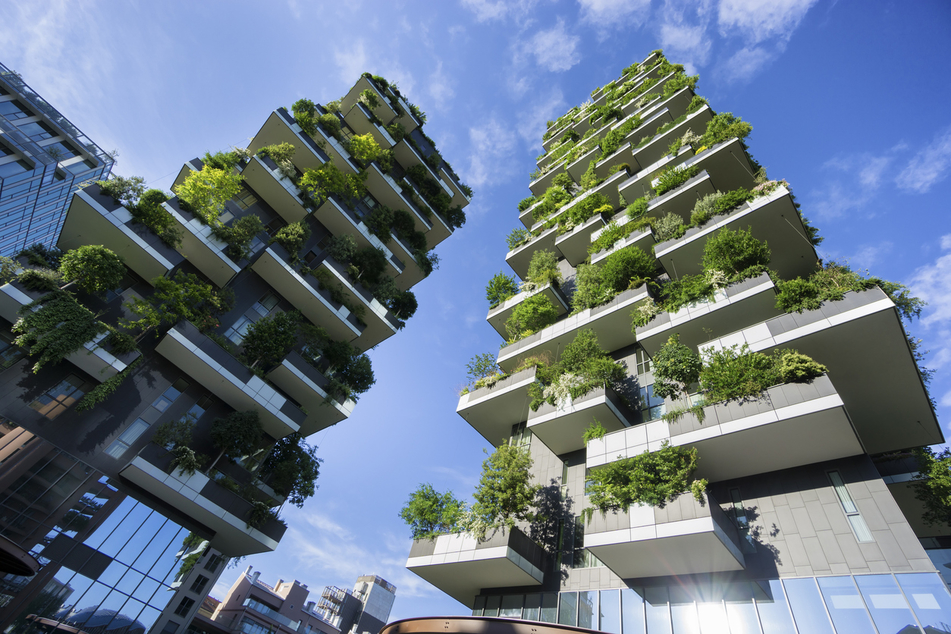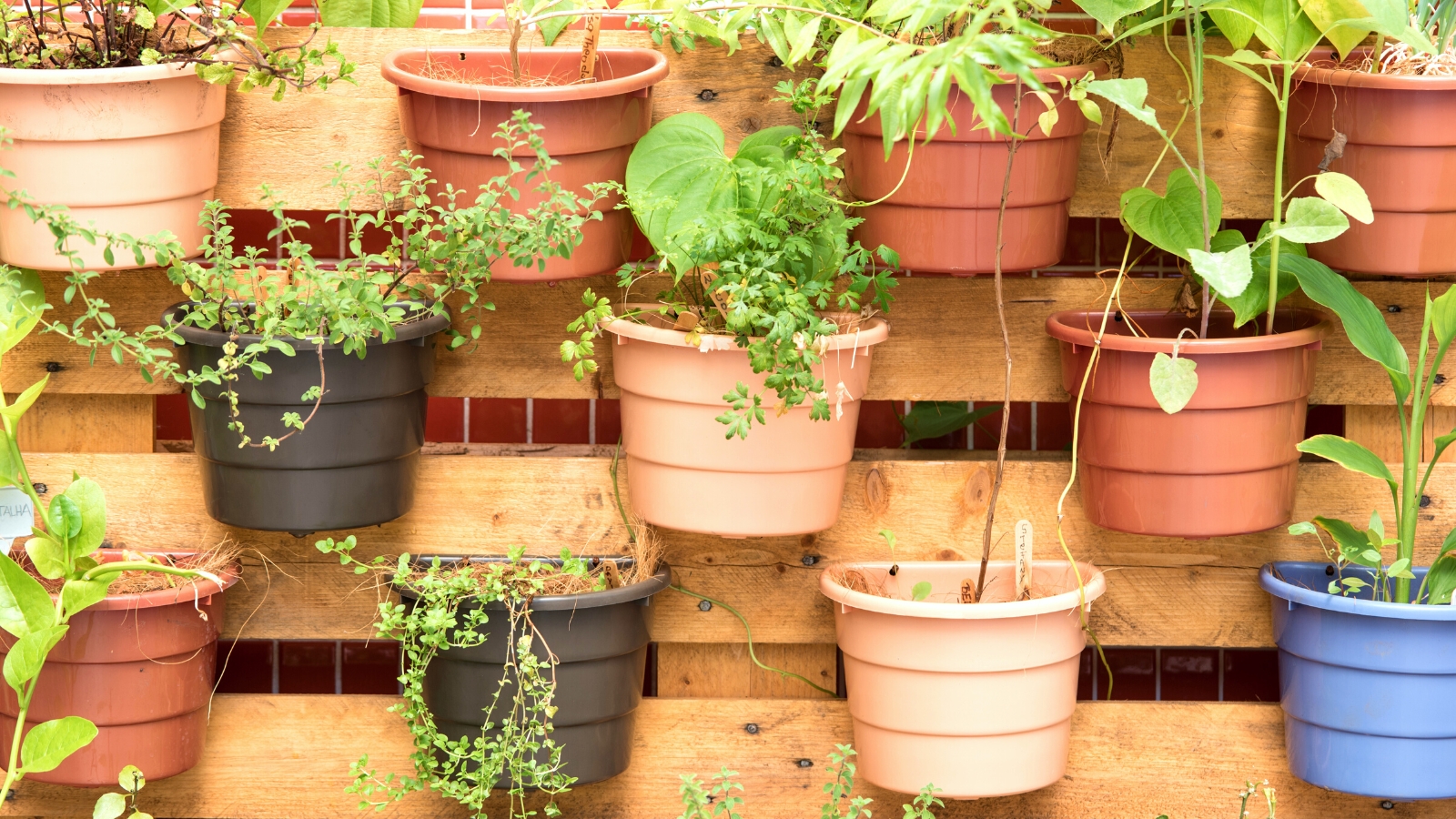Are you ready to witness the future of urban agriculture? Look no further than vertical gardening. This innovative technique is revolutionizing the way we grow plants in urban environments, maximizing limited space and providing a sustainable solution for food production. By harnessing the power of vertical space, urban farmers are discovering new possibilities to cultivate a wide variety of fruits, vegetables, and even herbs in a compact and efficient manner. With the potential to transform concrete jungles into vibrant green oases, vertical gardening is paving the way for a more sustainable and greener future. Urban agriculture is rapidly gaining popularity as cities become more crowded and space for traditional gardening becomes limited. One innovative solution to this problem is vertical gardening, which involves growing plants vertically on structures such as walls, roofs, and balconies. Not only does vertical gardening maximize the use of available space, but it also offers numerous benefits for the environment, food security, and overall sustainable living. In this article, we will explore the various advantages and techniques of vertical gardening, its applications in small spaces, and its implications for urban planning.
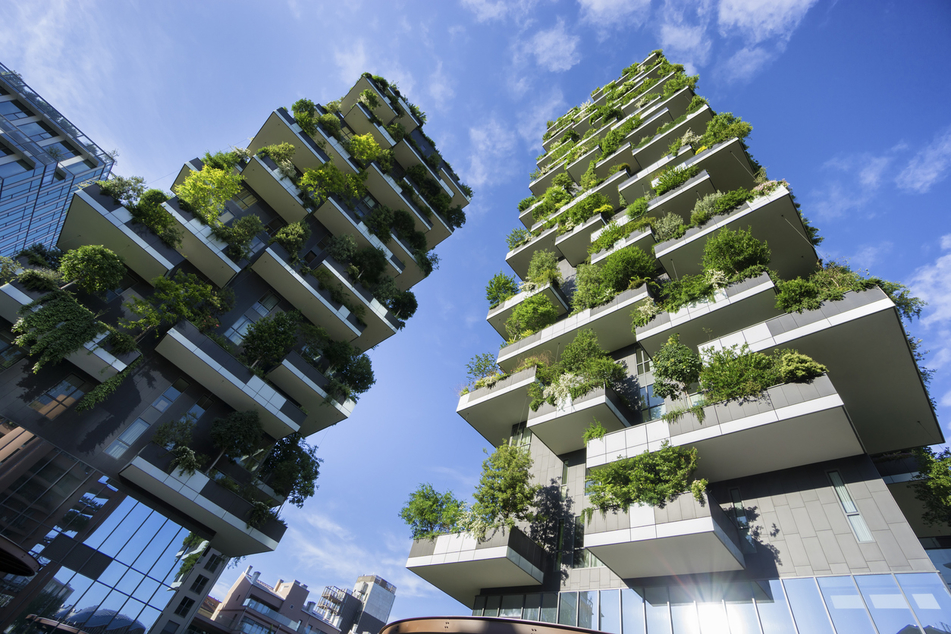
This image is property of www.hausvoneden.de.
Benefits of Vertical Gardening
Utilization of Space
One of the primary advantages of vertical gardening is its ability to optimize space utilization. In densely populated urban areas, finding enough room for traditional gardens can be a challenge. However, by growing plants vertically, you can make the most of the available space. Vertical gardens can be set up on walls, fences, and other structures, allowing plants to grow upwards instead of spreading outwards. This means that even in a small backyard or balcony, you can create a lush and vibrant garden.
Reduced Environmental Impact
Vertical gardening offers a range of environmental benefits, making it an attractive option for sustainable living. Firstly, it helps to reduce soil erosion by keeping the soil in place and preventing it from being washed away during heavy rains. Additionally, vertical gardens act as natural insulators, reducing the energy consumption required for heating and cooling buildings. Moreover, these gardens also help to absorb carbon dioxide and release oxygen, contributing to cleaner and fresher air in urban environments.
Improved Air Quality
In heavily industrialized cities, air pollution is a major concern. Vertical gardens have the potential to alleviate this issue by acting as natural air filters. Through the process of photosynthesis, plants absorb harmful pollutants such as carbon dioxide, nitrogen dioxide, and particulate matter from the air. This purification process significantly improves the air quality in the vicinity of the vertical garden, benefiting both human health and the environment.
Enhanced Food Security
Vertical gardening has the potential to enhance food security, particularly in urban areas where fresh produce may be limited or expensive to obtain. By growing your own fruits, vegetables, and herbs in a vertical garden, you can have a consistent supply of nutritious food right at your doorstep. This not only reduces dependence on external food sources but also allows individuals and communities to have greater control over the quality and safety of their food. Moreover, vertical gardening can contribute to reducing food waste by allowing for the efficient use of resources and preventing crops from spoiling during transit.
Types of Vertical Gardening
Vertical Gardens
Vertical gardens, also known as green walls or living walls, are a popular form of vertical gardening. They involve attaching plants to a vertical structure, such as a wall or fence, often using a trellis system or modular panels. These gardens can be installed both indoors and outdoors, providing a visually appealing and natural element to any space. Vertical gardens can accommodate a variety of plant species, including flowers, herbs, and even small fruit trees. They can be designed as standalone installations or incorporated into existing architectural structures.
Living Walls
Living walls are a specific type of vertical garden that focuses on incorporating plant life into the interior or exterior walls of buildings. These walls not only enhance the aesthetic appeal of a space but also provide insulation, noise reduction, and improved air quality. Living walls can be created using a variety of materials, such as felt pockets, modular planters, or customized irrigation systems. They can be found in various settings, including residential buildings, office spaces, and public areas like shopping centers and airports.
Green Roofs
Green roofs, also known as rooftop gardens, are another form of vertical gardening that utilizes the entire surface area of a roof for planting. Green roofs offer several advantages, including thermal insulation, stormwater management, and increased biodiversity within urban environments. The plants grown on green roofs help to regulate temperature fluctuations, reducing the need for artificial heating or cooling. Additionally, they absorb rainwater, preventing excessive runoff and reducing the burden on drainage systems. Green roofs can be implemented on various types of buildings, including residential homes, commercial complexes, and even industrial warehouses.
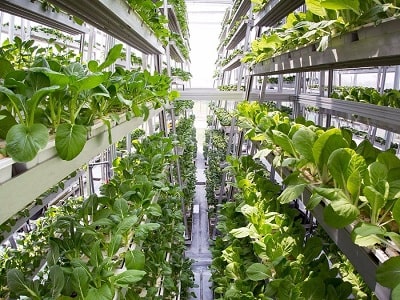
This image is property of www.techsciresearch.com.
Design Considerations for Vertical Gardens
Choosing the Right Location
When planning a vertical garden, it is crucial to select the right location that receives adequate sunlight and is suitable for the plants you wish to grow. Most plants require a minimum of six hours of direct sunlight each day, so ensure that your chosen spot is not overshadowed by buildings or trees. Additionally, consider the accessibility of the location for maintenance purposes, as well as its structural stability to support the weight of the garden.
Determining the Size and Structure
The size and structure of your vertical garden will depend on the available space and the desired plant species. Consider the dimensions of the area and choose a supporting structure that is sturdy and durable. The structure can be built using materials such as wood, metal, or plastic, and may require additional reinforcements to withstand the weight of the plants, soil, and irrigation system. It is also important to factor in the vertical garden’s drainage needs to prevent water accumulation and potential damage to the structure.
Selecting Suitable Plants
The choice of plants for your vertical garden is crucial for its success. Consider factors such as sunlight requirements, temperature tolerance, and water needs when selecting plant species. Determine the overall aesthetic you want to achieve and choose a mix of plants that will complement each other in terms of color, texture, and growth habit. It is recommended to choose plants that are adapted to vertical growing, such as vining plants, herbs, lettuces, and succulents. Additionally, consider incorporating pollinator-friendly plants to attract beneficial insects and support local biodiversity.
Providing Adequate Irrigation and Fertilization
Vertical gardens require a well-designed irrigation system to ensure plants receive sufficient water for growth. This can be achieved through the use of drip irrigation, soaker hoses, or vertical hydroponic systems. Regular monitoring of moisture levels and adjusting watering schedules accordingly is important to prevent over or underwatering. Additionally, provide adequate fertilization to nourish the plants, considering the specific nutrient requirements of the chosen plant species. Organic fertilizers or slow-release granules are often preferred to ensure the sustainability and environmental friendliness of the vertical garden.
Advancements in Vertical Gardening Techniques
Hydroponics and Aeroponics
Hydroponics and aeroponics are advanced techniques used in vertical gardening that eliminate the need for soil. Hydroponics involves growing plants in a nutrient-rich water solution, while aeroponics involves suspending the plants in air and misting the roots with a nutrient solution. These methods minimize water usage, increase plant growth rates, and allow for year-round cultivation. By providing precise control over nutrient and moisture levels, hydroponics and aeroponics enable plants to thrive in vertical gardens, even in limited spaces or challenging environments.
Use of Artificial Lighting
In situations where natural light is limited, artificial lighting can be employed to supplement plant growth in vertical gardens. LED grow lights are commonly used due to their energy efficiency, long lifespan, and ability to provide the specific light spectrum required for photosynthesis. By using timers and adjustable light intensities, artificial lighting can mimic natural sunlight and ensure optimal plant growth. This advancement allows gardening enthusiasts to cultivate a wide range of plants indoors or in areas with limited access to natural light.
Automated Systems
Automation plays a significant role in optimizing the efficiency and productivity of vertical gardens. Automated systems can control irrigation, nutrient delivery, lighting schedules, and even climate conditions within a vertical garden. These systems can be programmed to monitor and adjust parameters such as temperature, humidity, and pH levels, ensuring optimal growing conditions for the plants. By reducing the manual labor required for maintenance, automated systems make vertical gardening more accessible and manageable, even for individuals with limited time or gardening experience.
Integration of Internet of Things (IoT)
The integration of the Internet of Things (IoT) technology into vertical gardening has opened up new possibilities for efficient plant care and maintenance. IoT-enabled devices, such as sensors and actuators, can be used to collect real-time data on environmental conditions, plant health, and water usage. This data can then be transmitted to a centralized control system or accessed remotely through a smartphone or computer. By leveraging this technology, vertical gardeners can make informed decisions, optimize resource allocation, and remotely monitor and adjust the conditions of their gardens, enhancing overall efficiency and productivity.
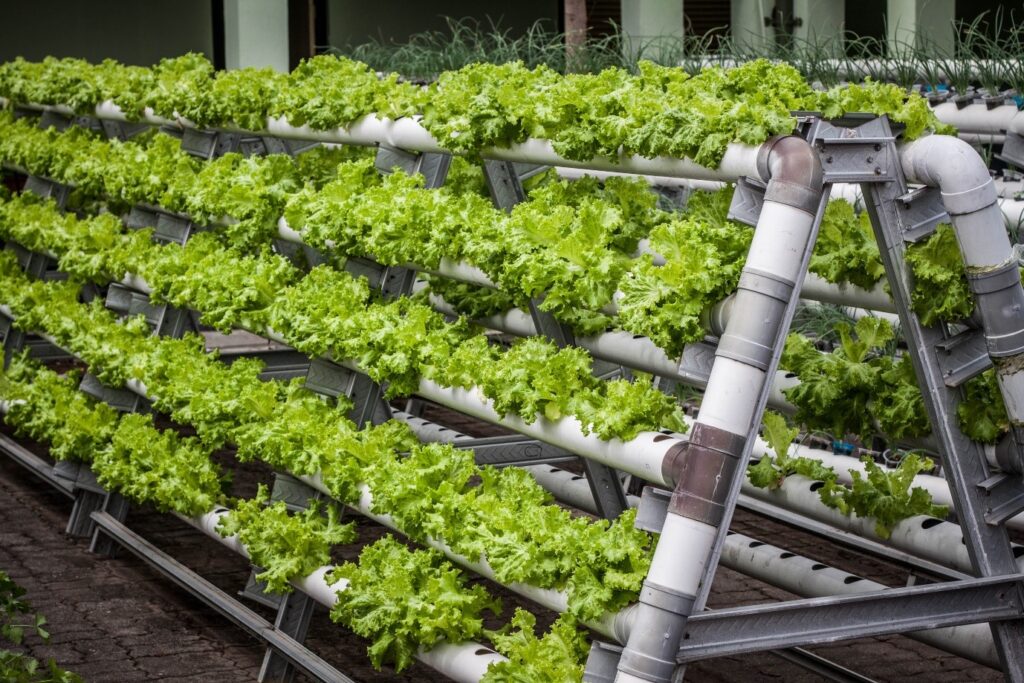
This image is property of commercialwaste.trade.
Vertical Gardening in Small Spaces
Balcony Gardens
For those living in apartments or condos, balconies offer the perfect opportunity for creating a vertical garden. With a little creativity and the right structural support, balconies can be transformed into lush green spaces. Hanging baskets, vertical planter boxes, or trellises attached to the balcony railing can provide ample space for growing an array of plants. Herbs, trailing flowers, and compact vegetables can thrive in these small spaces, providing a fresh and aromatic touch to urban living.
Indoor Vertical Gardening
Vertical gardening is not limited to outdoor spaces. Indoor vertical gardens can be created using wall-mounted vertical planters or freestanding structures. These gardens not only add a touch of greenery to your interior decor but also enhance the air quality and create a soothing ambiance. Leafy greens, herbs, and small ornamental plants are well-suited for indoor vertical gardens and can be easily maintained with proper lighting and watering. Additionally, indoor vertical gardens can be supplemented with hydroponic or aeroponic systems to maximize space and yield.
Window Farms
Window farms are a unique form of vertical gardening that utilizes natural sunlight and window space to grow plants. The concept involves suspending a series of vertically arranged plant containers from a window frame, allowing the plants to receive adequate sunlight while utilizing the vertical space effectively. Window farms are particularly popular among urban dwellers who lack access to outdoor growing spaces. Herbs, salad greens, and small vegetables thrive in window farms and can be harvested regularly for fresh and healthy meals.
Community Gardens
Community gardens provide an excellent opportunity for individuals or groups living in urban areas to engage in vertical gardening. These gardens are shared spaces where community members can collectively grow and maintain plants. Vertical gardening techniques can be employed in community gardens to maximize space utilization and ensure everyone has access to fresh fruits, vegetables, and herbs. Community gardens not only foster a sense of community and social interaction but also promote sustainable living and food security within neighborhoods.
Urban Agriculture and Food Security
Addressing Food Deserts
Food deserts, areas with limited access to fresh and healthy food, are a prevalent issue in many urban communities. Vertical gardening can play a significant role in addressing this problem by providing local, affordable, and sustainable food options. By establishing vertical gardens in food desert areas, residents can benefit from an increased availability of fresh produce, reducing their dependence on processed and unhealthy foods. Vertical gardening initiatives can be integrated into community programs and initiatives to ensure equitable access to nutritious food for all residents.
Reducing Food Miles
Food miles refer to the distance that food travels from the point of production to the consumer. The transportation of food over long distances contributes to carbon emissions, energy consumption, and environmental degradation. Vertical gardening offers a solution by enabling the cultivation of food in urban areas, closer to the consumer. Freshly harvested produce from vertical gardens can be consumed locally, eliminating the need for long-distance transportation. By reducing food miles, vertical gardening contributes to a more sustainable and environmentally friendly food system.
Promoting Local and Sustainable Food Production
Vertical gardening promotes local and sustainable food production by empowering individuals and communities to grow their own food. By cultivating fruits, vegetables, and herbs in vertical gardens, individuals can reduce their reliance on commercially grown produce, which often requires excessive pesticide use and is subject to long-distance transportation. Urban agriculture initiatives that incorporate vertical gardening can strengthen the local food system, promote self-sufficiency, and foster a deeper connection between urban dwellers and their food sources.
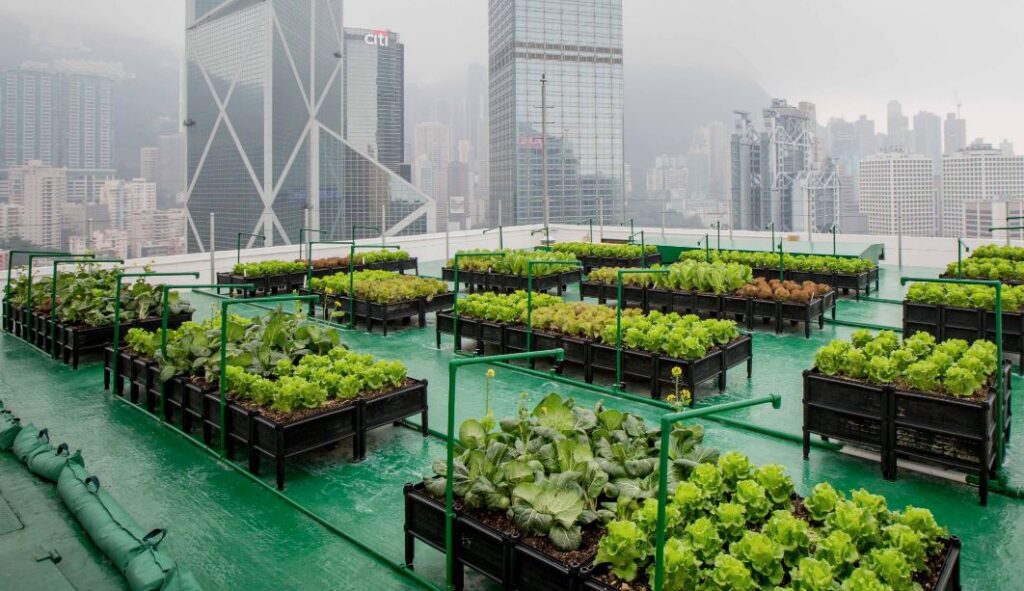
This image is property of images.squarespace-cdn.com.
Vertical Gardening for Sustainable Living
Water Conservation
Water scarcity is a pressing issue in many regions, making efficient water usage a priority in gardening. Vertical gardening offers water-saving advantages by reducing evaporation and runoff. By providing the water directly to the plants at their roots, vertical gardens minimize water wastage. Additionally, vertical gardens can be designed to capture and recycle rainwater, further reducing reliance on freshwater sources. By adopting vertical gardening techniques, individuals can minimize their water consumption and contribute to sustainable living.
Reduced Energy Consumption
Vertical gardening can help reduce energy consumption for heating and cooling purposes in buildings. By acting as insulators, vertical gardens provide natural cooling effects during hot summers and can help retain heat in colder months. This reduces the need for air conditioning and heating systems, leading to energy savings and lower utility bills. As urban areas become increasingly energy-conscious, vertical gardening provides a sustainable solution to minimize the environmental impact of building operations.
Minimization of Pesticide Use
Traditional agriculture often relies heavily on chemical pesticides to control pests and diseases. However, these pesticides can have detrimental effects on human health and the environment. Vertical gardening offers a more sustainable alternative by integrating natural pest control techniques. By attracting beneficial insects such as ladybugs, lacewings, and bees, vertical gardens can control pests naturally. Additionally, companion planting, where different plant species are grown together to deter pests, can be utilized in vertical gardens to minimize the need for chemical pesticides, ensuring safe and healthy produce.
Promotion of Biodiversity
Urban landscapes are often characterized by limited biodiversity due to habitat loss and fragmentation. Vertical gardening presents an opportunity to create pockets of biodiversity within cities. By incorporating native plants, flowering species, and nectar-rich flowers, vertical gardens can attract pollinators and beneficial insects, supporting local biodiversity. Vertical gardens not only provide vital habitats for birds, bees, and butterflies but also create a visually stunning and ecologically diverse urban environment.
Challenges and Limitations of Vertical Gardening
Initial Setup Costs
While vertical gardening offers numerous benefits, it is important to consider the initial setup costs. The construction of vertical garden structures, irrigation systems, and the purchase of suitable plants and materials can incur significant expenses. However, with careful planning and research, it is possible to minimize these costs by utilizing recycled or repurposed materials, opting for cost-effective irrigation solutions, and selecting plants that are readily available and low-maintenance.
Maintenance Requirements
Vertical gardens, like any other garden, require regular maintenance to thrive. This includes pruning, watering, fertilizing, and monitoring for pests and diseases. Vertical gardens may require more frequent watering due to their exposure to wind and sunlight, as well as regular pruning to manage the growth of vines and climbers. Additionally, pests and diseases can spread quickly in vertical gardens, so proactive monitoring and appropriate treatment measures should be implemented. It is important to be prepared for the ongoing commitment required to maintain a healthy and flourishing vertical garden.
Limited Crop Variety
Vertical gardening may not be suitable for certain types of plants that require extensive root systems or more horizontal space to grow. Trees and large shrubs typically do not thrive in vertical gardens due to their size and the unique environmental conditions that vertical gardens present. However, there are numerous plant species, including leafy greens, herbs, compact vegetables, and climbing flowers, that are well-suited for vertical gardening. By choosing suitable plant varieties, you can still achieve a diverse and productive vertical garden.
Structural Limitations
The success of a vertical garden is dependent on the structural integrity of the supporting elements. Before installing a vertical garden, it is important to assess the load-bearing capacity of the chosen structure, especially for larger or heavier plants. Balconies, fences, and walls must be able to withstand the weight of the plants, soil, water, and irrigation systems. Seeking professional guidance or consulting structural engineers is recommended to ensure the safety and stability of the vertical garden.
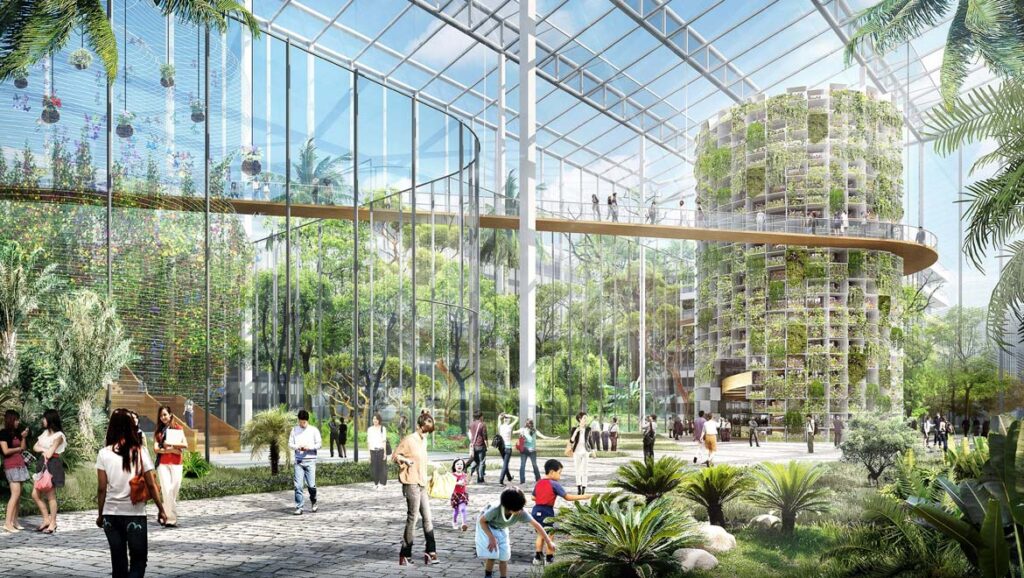
This image is property of www.evolving-science.com.
Successful Examples of Vertical Gardening
The High Line Park, New York City
The High Line Park in New York City is a prime example of successfully incorporating vertical gardening into urban design. This elevated park transformed an unused elevated railway track into a vibrant green space filled with native plants, trees, and flowers. The park features a variety of vertical gardens, living walls, and green roofs, showcasing how vertical gardening can rejuvenate and transform urban spaces, while also attracting thousands of visitors each year.
The Bosco Verticale, Milan
The Bosco Verticale, or Vertical Forest, in Milan, Italy, has gained international recognition for its innovative approach to vertical gardening. This residential complex consists of two high-rise towers covered in more than 900 trees, as well as over 20,000 shrubs and plants. The vertical forest not only enhances air quality and reduces pollution but also provides a sustainable living space for residents. The Bosco Verticale serves as a living example of how vertical gardens can be integrated into urban architecture to create thriving and environmentally friendly communities.
The Singapore Supertrees
The Singapore Supertrees at Gardens by the Bay are towering vertical gardens that have become iconic landmarks of the city-state. These man-made trees, ranging in height from 25 to 50 meters, are covered with a diverse array of tropical plants, both epiphytes and climbers. The Supertrees serve multiple purposes, including rainwater harvesting, air exhaust functions, and solar energy generation. They also provide a magnificent visual spectacle and offer elevated walkways for visitors to enjoy panoramic views of the city. The Singapore Supertrees exemplify the harmonious integration of vertical gardening with urban development.
The Gardens by the Bay, Singapore
Gardens by the Bay in Singapore is a testament to the city-state’s commitment to creating sustainable and eco-friendly urban spaces. This sprawling garden complex features various types of vertical gardening, including living walls, rooftop gardens, and vertical planters. These vertical gardens not only enhance the aesthetic appeal of the gardens but also contribute to energy conservation and environmental sustainability. With their unique blend of technology, artistry, and nature, the Gardens by the Bay showcase the immense potential of vertical gardening in urban environments.
Implications for Urban Planning
Integration of Vertical Gardens in City Planning
Vertical gardening presents an opportunity to integrate green spaces into urban landscapes and should be considered in city planning. By incorporating vertical gardens into the design of buildings, public spaces, and infrastructure, cities can maximize their environmental, economic, and social benefits. Vertical gardens can transform concrete jungles into thriving green oases, improve air quality, mitigate urban heat island effects, and create a sense of well-being and connection with nature.
Creating Green Spaces in Dense Urban Areas
As urban areas become more densely populated, the need for green spaces becomes increasingly important. Vertical gardening offers a solution by utilizing vertical structures to create green spaces where traditional gardens may not be feasible. By incorporating vertical gardens into urban areas, cities can provide residents with accessible and inviting recreational spaces, promote mental well-being, and foster a stronger sense of community and connection with nature.
Maximizing the Potential of Vertical Structures
Many cities are filled with vacant or underutilized vertical structures that have the potential to be transformed into productive green spaces. By repurposing existing buildings, walls, or infrastructure, urban planners can unlock valuable space for vertical gardens. Incorporating vertical gardening techniques into the renovation and design of these structures can help address urban blight, improve aesthetics, and contribute to the overall sustainability and livability of the city.
In conclusion, vertical gardening is the future of urban agriculture, revolutionizing the way we cultivate plants in limited spaces. Its numerous benefits, including space utilization, reduced environmental impact, improved air quality, and enhanced food security, make it an attractive solution for sustainable living. Whether through vertical gardens, living walls, or green roofs, vertical gardening offers a range of possibilities for transforming urban landscapes into biodiverse and environmentally friendly environments. By embracing vertical gardening techniques, cities can address challenges such as food security, limited access to fresh produce, and environmental degradation, while promoting community engagement, healthy living, and the creation of vibrant urban spaces. With successful examples of vertical gardening worldwide and its integration into urban planning, the future of urban agriculture looks green and promising.

